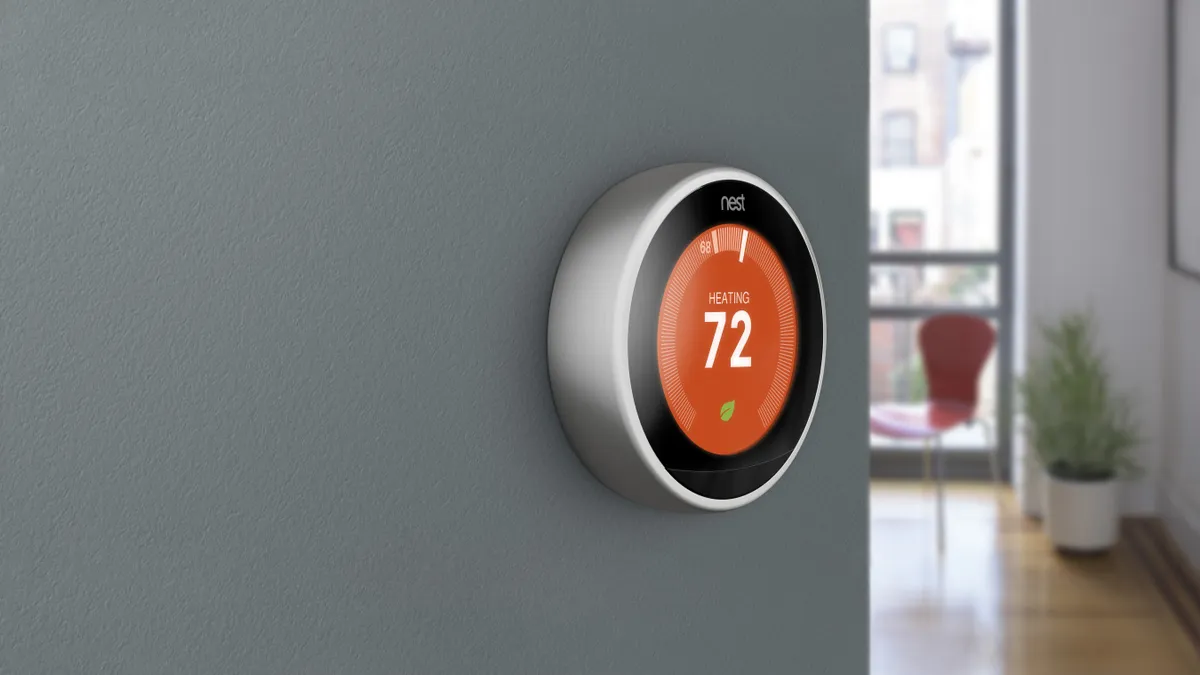Dive Brief:
- Google will open up its Weave software, used to allow the Nest thermostat to communicate with other devices, to developers beginning in 2016, Bloomberg Business reports.
- The move will allow third parties to develop apps and products that work on the Nest network, growing the number of devices and services available for the "connected" home.
- General Electric Co. and Procter & Gamble will be partnering with Google on the initiative.
Dive Insight:
The Nest system has outgrown the "thermostat" label already, with new offerings including a video doorbell, baby monitoring capabilities and a network to keep an eye on your pet. And the capabilities are likely going to expand, as Google will next year open its Weave software to all developers.
"Until now, developers have been using our cloud API to connect to Nest. It’s a great way for companies to start building connections quickly ... but it also means their products need an Internet connection to work with Nest," Google explained in a blog post.
But not all products have or need an internet connection, so Google has been using its proprietary Weave software.
"Nest Weave lets devices talk directly to each other and to Nest. And because it’s reliable, compact and secure, it works great for all kinds of products – like a lightbulb that needs to turn on and off without any lag time, or a door lock that runs on battery power, or a security system that needs to work even if Wi-Fi goes down," the company explained.
Google bought Nest Labs last year for $3.2 billion. Over the summer, it unveiled a new line of product offerings, with a focus is on home security and protection. The devices can now keep watch on your home via a high definition camera, and includes a smoke and carbon monoxide detector being marketed with home insurance companies. These investments are a move to talk customers into buying into products that allows internet devices to "talk' with each other, boosting control over lights, heating, cooling, among other offerings.
Utilities have eyed so-called "smart" technology products as a method for customers to control their energy usage, especially as rooftop solar pilot programs become more popular. Such devices have upended the traditional customer-utility relationship, according to the latest Black & Veatch report, while evolving into a desirable option for utilities looking to improve energy efficiency and demand response.














